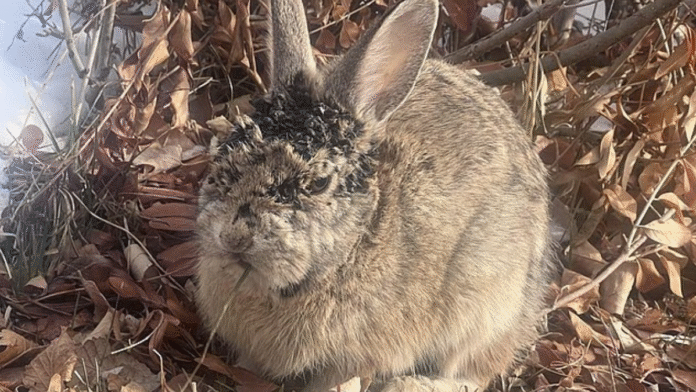Key Point Summary – Frankenstein rabbits
- Virus turning rabbits into tentacle-faced creatures spreads to two more states
- Cottontail papilloma virus (CRPV) blamed for bizarre growths
- Mosquito and tick season could speed up the outbreak
- No risk to humans or pets, officials say
- Mythical jackalope linked to real-life infected rabbits
Strange Sightings In New States
The creepy story of the so-called Frankenstein rabbits has now hopped beyond Colorado. People in Minnesota and Nebraska are spotting more of the animals with strange, horn-like and tentacle-shaped growths on their heads. The cottontail papilloma virus (CRPV) causes these growths, turning harmless rabbits into unsettling sights. Wildlife officials urge everyone to stay back and avoid touching them.
Mosquitoes, ticks, and fleas carry the virus from one rabbit to another after biting an infected one. Because summer brings peak insect season, experts fear the number of cases could jump across the Midwest in the coming weeks.
Social Media Sparks Alarm
After multiple sightings in Fort Collins, Colorado, locals in St Paul and Minneapolis joined the conversation online. One resident wrote, “My neighborhood is filled with cottontails with Shope papillomavirus.” Another added, “By mid-late summer, it seems all the surviving new rabbits have it.”
Many Minnesotans say it’s now rare to see a rabbit without the virus. Still, scientists confirm that insects carrying CRPV cannot infect humans. They also note that dogs and cats remain safe from it.
Tumors And Survival
The virus starts with small red spots, which then grow into wart-like lumps. These often harden into keratinized papillomas — the “horns” and “tentacles” that give the rabbits their scary look. In some cases, the growths turn into aggressive skin cancers if left alone.
While CRPV usually doesn’t cause pain, it can kill when tumors block a rabbit’s mouth or eyes, making it hard to eat. In Nebraska, people saw infected rabbits survive in deep snow last winter. In Colorado, Fort Collins resident Susan Mansfield described the growths as “black quills or black toothpicks” and said she was shocked they lived through the cold.
Calls For Culling
The strange appearance has sparked debates online. Some argue it’s kinder to put infected rabbits down, while others think nature should take its course. “Put him out of his misery,” one person wrote on Reddit.
Animal control officials, however, recommend leaving the rabbits alone. Colorado Parks and Wildlife stress that the virus poses no danger to humans or pets.
From Myth To Reality
These real-life cases may explain one of America’s most famous animal myths — the jackalope. For centuries, stories and drawings of horned rabbits have appeared in books.
In the 1930s, Wyoming taxidermist Douglas Herrick mounted antelope horns on a jackrabbit, creating the modern jackalope hoax. Experts believe he may have seen real CRPV cases before making his prank.
As more sightings emerge and insect season rolls on, wildlife experts are watching closely to see if these Frankenstein rabbits will show up in even more states.




